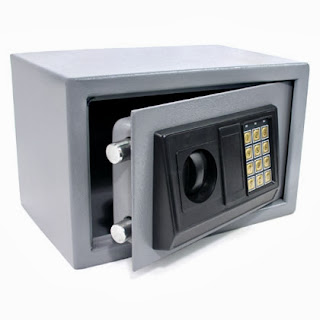On November 2, 1886, inventor Henry Brown patented a "receptacle for storing and preserving papers." The container was fire retardant and accident resistant as it was made from forged metal. The box was able to be safely secured with a lock and key and also able to maintain organization by offering different slots to organize important papers.
From Wikipedia, the free encyclopedia
"Strongbox" redirects here. For the secure communications platform
Specifications
Specifications for safes include some or all of the following parameters:
Burglar-resistance
Fire-resistance
Environmental resistance (e.g., to water or dust)
Type of lock (e.g., combination, key, time lock, electronic locking)
Location (e.g., wall safe, floor safe)
Smart safes as part of an automated cash handling system
It is often possible to open a safe without access to the key or knowledge of the combination; this activity is known as safe-cracking and is a popular theme in heist films.
A diversion safe, or hidden safe, is a safe that is made from an otherwise ordinary object such as a book, a candle, a can, or even a wall outlet plug. Valuables are placed in these hidden safes, which are themselves placed inconspicuously (for example, a book would be placed on a book shelf).
Strongbox multiple locking mechanism
Fire resistant record protection equipment consists of self-contained devices that incorporate insulated bodies, doors, drawers or lids, or non-rated multi-drawer devices housing individually rated containers that contain one or more inner compartments for storage of records. These devices are intended to provide protection to one or more types of records as evidenced by the assigned Class rating or ratings; Class 350 for paper, Class 150 for microfilm, microfiche other and photographic film and Class 125 for magnetic media and hard drives.
These types of enclosures can be rated for periods of ½, 1, 2 and 4 hour durations.
In addition, these enclosures may be rated for their impact resistance, should the safe fall a number of feet to a lower level or have debris fall upon it during a fire.
Burglary resistant safes are rated as to their resistance to the type of tools to be used in their attack and also the duration of the attack.
The attack durations are for periods of 15 min., 30 min. and 60 min.
Safes can also contain hardware that automatically dispenses cash or validates bills as part of an automated cash handling system.



No comments:
Post a Comment